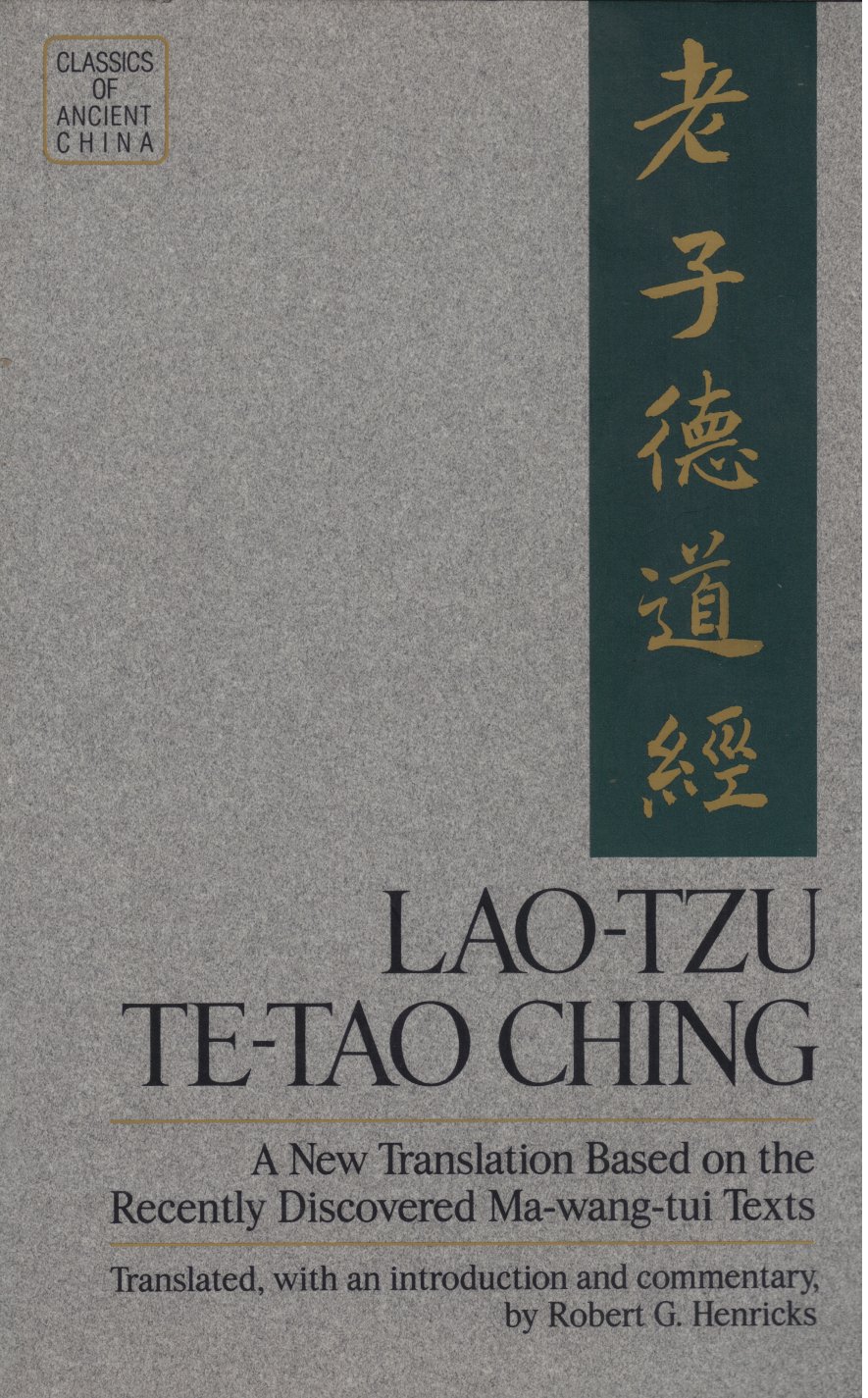
Lao-Tzu Te-Tao Ching

Subtitled A New Translation Based on the Recently Discovered Ma-wang-tui Texts.
This refers to some texts of the Tao Te Ching that were hundreds of years older than any other texts. The book consists of an introduction dealing with the texts and the philosophy of Lao-tzu. Then there's a translation that looks like a regular translation in style, followed by another translation with commentary and notes. There's also translation's notes, additional notes, and a bibliography.
The author thinks that the present form of the Tao Te Ching was settled around the year 50 B.C. The book also prints the Te-oriented chapters before the Tao-oriented chapters.
Verse 2, commentary form
1. When everyone in the world knows the beautiful as beautiful, ugliness comes into being;
2. When everyone knows the good, then the not good comes to be.
3. The mutual production of being and nonbeing.
4. The mutual completion of difficult and easy.
5. The mutual formation of long and short.
6. The mutual filling of high and low.
7. The mutual harmony of tone and voice.
8. The mutual following of front and back-
9. These are all constants.
10. Therefore the Sage dwells in nonactive affairs and practices the wordless teaching.
11. The ten thousand things arise, but he doesn't begin there;
12. He acts on their behalf, but he doesn't make them dependent;
13. He accomplishes his tasks, but he doesn't dwell on them;
14. It is only because he doesn't dwell on them, that they therefore do not leave him.
(This follows the yin-yang approach which even would fit today with things like protons and anti-protons, matter and anti-matter, and so on. Yet this all deals with concepts. A lot of reality consists of things like birds, mountains and planets, yet, as far as we know, there are no anti-birds, anti-mountains or anti-planets, so the yin-yang concept seems somewhat selective.)
(I don't really like translations that number sentences since there is no way to do that with assured accuracy. The early texts were written on bamboo sticks, generally, and over time these got mixed up, leading to the Tao Te Ching with parts of it in certain chapters that seem to go with other chapters better. Numbering the sentences might be orderly, but the original order may not match the actual numbered sentences.)
Verse 12
1. The five colors cause one's eyes to go blind.
2. Racing horses and hunting cause one's mind to go mad.
3. Goods that are hard to obtain pose an obstacles to one's travels.
4. The five flavors confuse one's palate.
5. The five tones cause one's ears to go deaf.
6. Therefore, in the government of the Sage,
7. He's for the belly and not for the eyes.
8. Thus he rejects that and takes this.
(The commentary on this and other verses spends time noting which words and sentences differ from later versions of the Tao Te Ching. Unfortunately, the meaning of this chapter is not explained at all, leaving a good part of it difficult to figure out.)
The book is interesting in that it looks at an early translation, but I don't think it's for the casual reader since it spends time on exactly how the old texts differ from the newer texts without trying to make sense out of what the text is actually saying.
Back to start of Spirituality section
Back to start of Taoism section
Back to main Index page
|